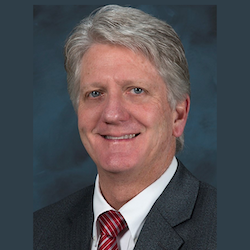Graduate Student Seminar
April 25, 2025
10:00 a.m. ET
McConomy Auditorium, First Floor Cohon University Center
April 25, 2025
10:00 a.m. ET
McConomy Auditorium, First Floor Cohon University Center
For decades, it has been known that oxide dispersion strengthening (ODS) is one of the most effective means of producing creep-resistant alloys. However, the widespread deployment of ODS has been limited by the complex, conventional processing route to create these alloys involving mechanical alloying and subsequent thermomechanical processing. A new additive ODS process using laser powder bed fusion has recently been developed by collaborators at NASA Glenn Research Center and enables the synthesis of ODS alloys in a single step. This route has been utilized to design an ODS solid solution alloy (GRX-810) which has exceptional high temperature properties when compared with other solid solution Ni-base superalloys. Detailed electron microscopy analysis has been performed to characterize the structure and composition of the oxide dispersoids, and other minor grain boundary phases. In addition, diffraction contrast imaging STEM imaging reveals that a large dislocation density is created during the build process, and the oxide dispersoids contribute to a remarkable stabilization of the dislocation substructure, even after long time at high temperature. These microstructure insights are being used to understand the significantly improved creep resistance of GRX-810 in comparison to a model NiCoCr ODS alloy. The present status of this work, understanding of strengthening mechanisms, and prospects for developing a wider range of ODS strengthened alloys will be discussed.

Professor Mills earned his Ph.D. degree in Materials Science and Engineering at Stanford University in 1985. After a two-year research associate appointment at the Ecole Polytechnique Federale-Lausanne, Switzerland, and a six-year appointment as Senior Member of Technical Staff at Sandia National Laboratories, Livermore, he joined the Department of Materials Science and Engineering at the Ohio State University in 1994. Mills was promoted to Professor in 2000 and was appointed as the McDougal Professor of Engineering in 2004. Since 2019, he has been serving as Chair of the Department of Materials Science and Engineering at OSU (he was Interim Chair in 2014-2015). Mills and his group are developing new insights into the mechanical behavior of several important metallurgical systems through a detailed understanding of elementary deformation mechanisms. Recent research has included studies of deformation behavior in commercial titanium and zirconium alloys, strengthening mechanisms in aluminum alloys and novel ferritic steels, dislocation processes and microstructure development in nickel-based superalloys, and deformation mechanisms in high entropy alloys. This understanding forms the foundation for models of behavior that have significant basic science content and are also relevant to industrial applications through the development of Integrated Computational Materials Engineering tools. He is a Fellow of the American Society for Metals, was inducted as Fellow of TMS in 2015, and has received the Oleg D. Sherby Award from TMS for research in high temperature materials. Mills received the Alexander Von Humboldt Research Fellowship in 1996 and in 2019 he received the Alexander von Humboldt Research Award. In 2021, he was awarded the Heyn Medal of Honor from the DGM (Deutsche Gesellschaft für Materialkunde) for achievements in the field of materials science and engineering, and he holds honorary doctorate from the Ruhr University, Bochum, which was awarded in March 2022.
November 4 2025
7:00 AM ET
US locations
November 4 2025
9:00 AM ET
Materials Science and Engineering
M.S. Program Information Session
Join us online to learn more about becoming part of the graduate student community through our master's degree programs.
Virtual
November 5 2025
4:00 PM ET
Materials Science and Engineering
"What Materials Research Looks Like At Apple,” presented by Carolyn Duran
Doherty A303
November 7 2025
12:45 PM ET
Materials Science and Engineering
Adventures in additive manufacturing for space exploration, presented by Daniel Oropeza, University of California Santa Barbara
7500 Wean Hall
November 11 2025
11:00 AM ET
Materials Science and Engineering
"Behind the Scenes with an ACS Editor: Insights into Scholarly Publishing and Manuscript Preparation,” presented by Dr. Raymond Schaak
5201 Scott Hall
November 13 2025
4:30 PM - 6:30 PM ET
Roberts Engineering Hall, Singleton Room, 4th floor